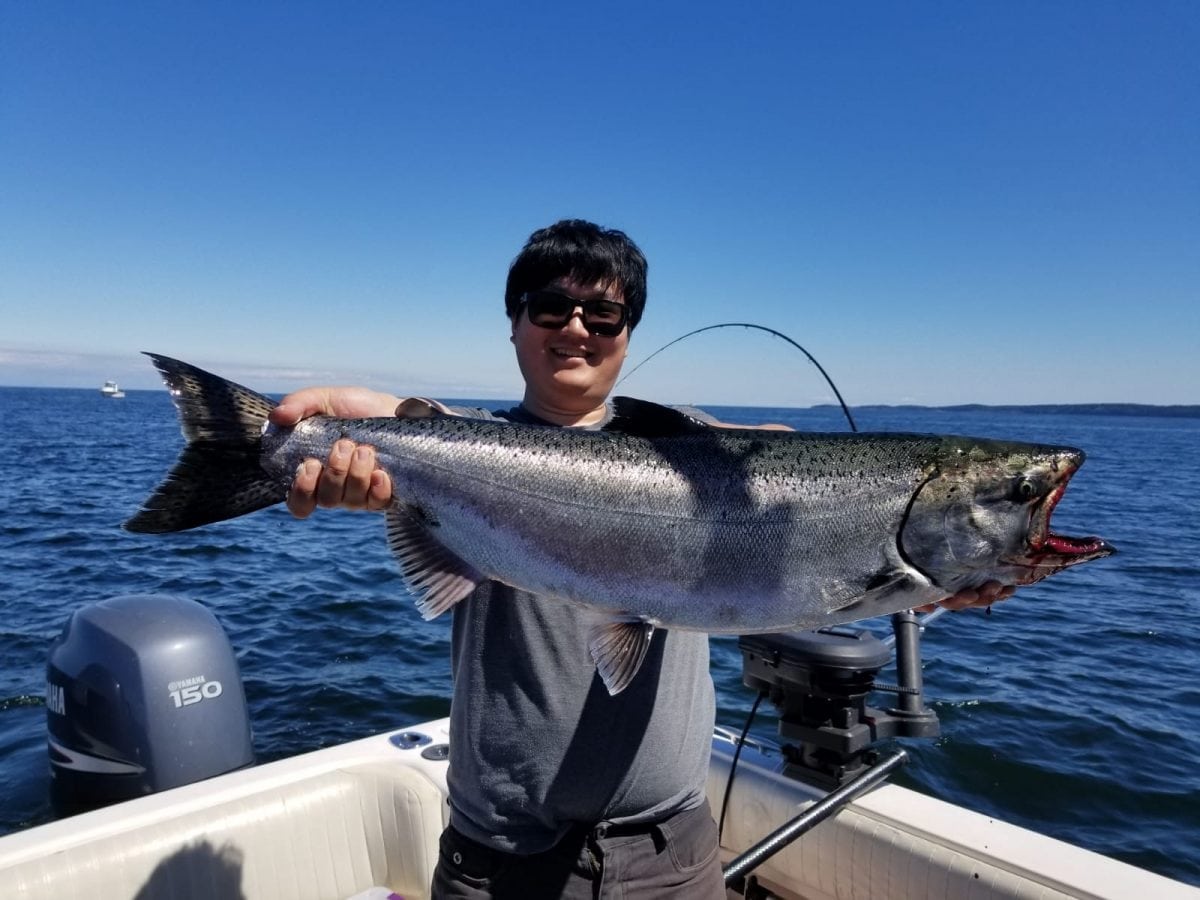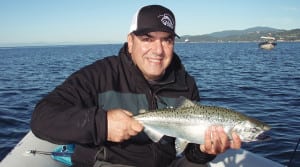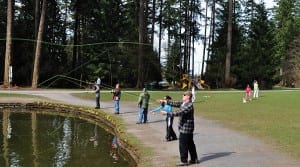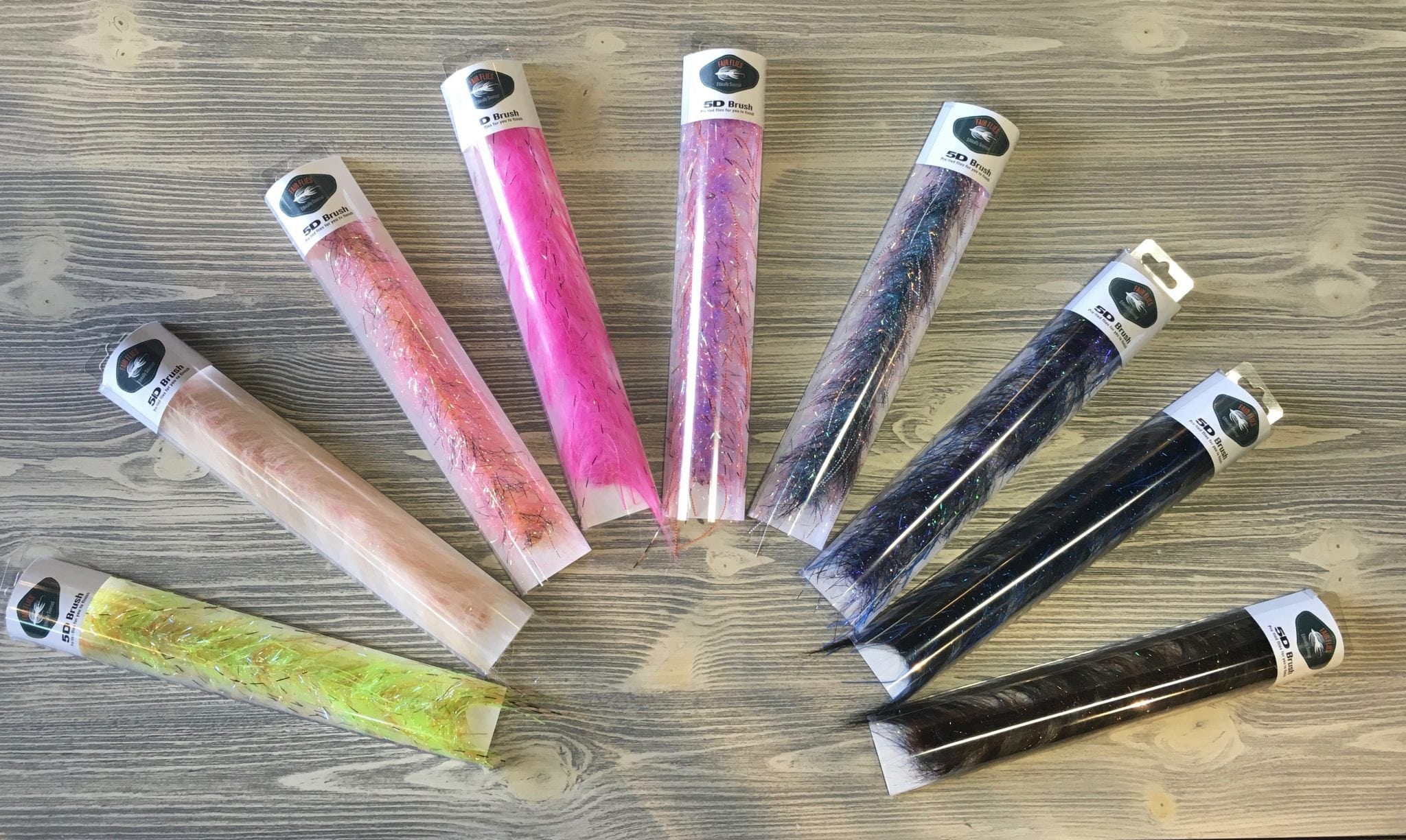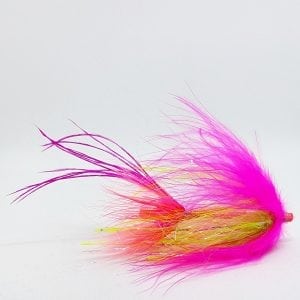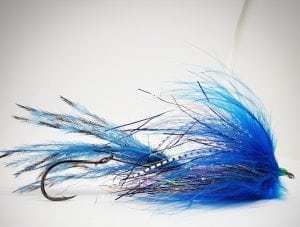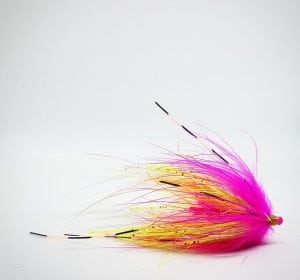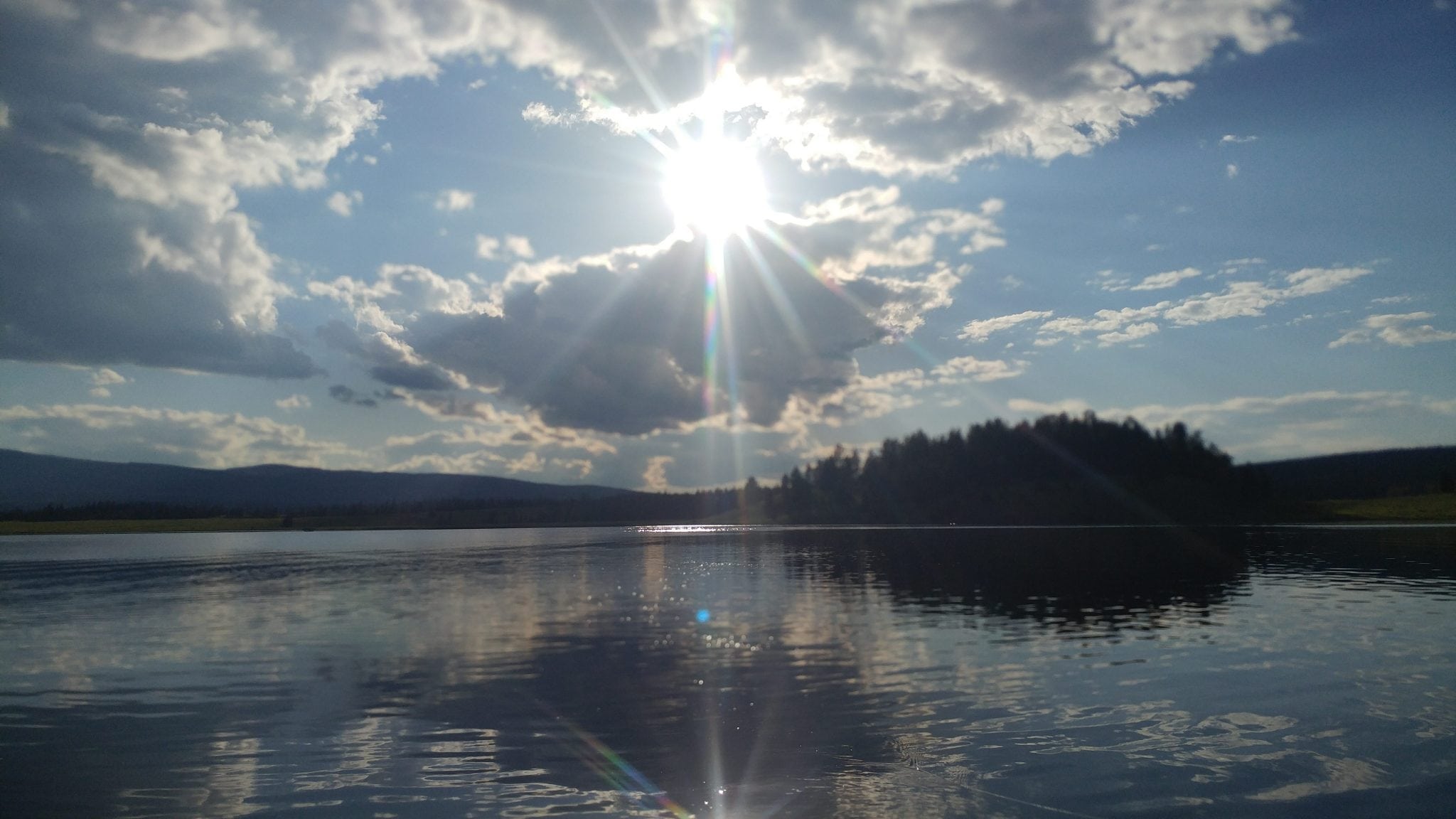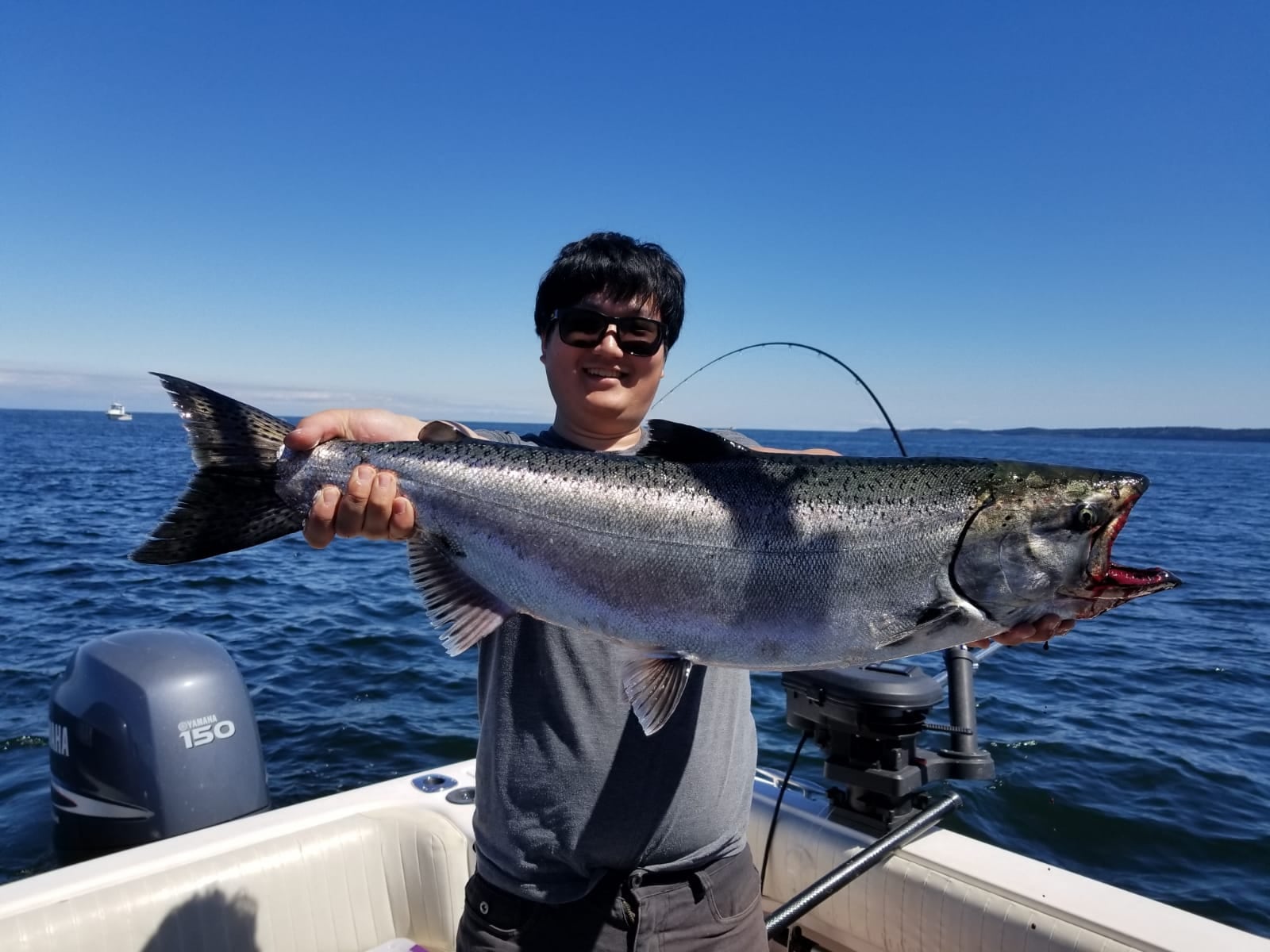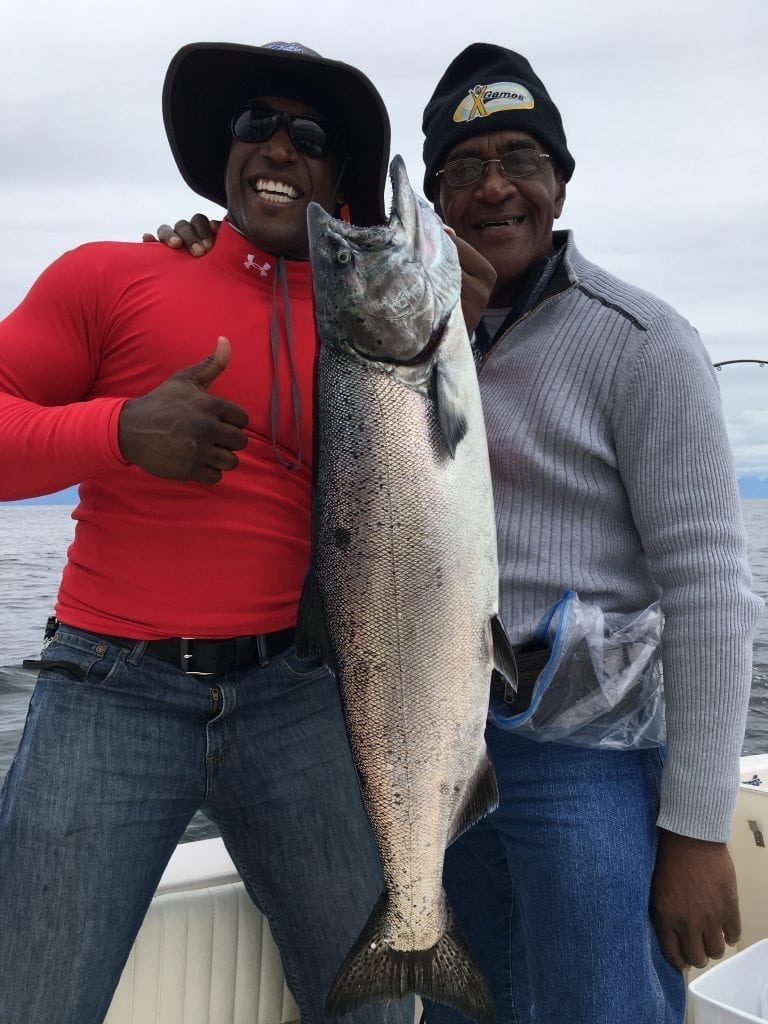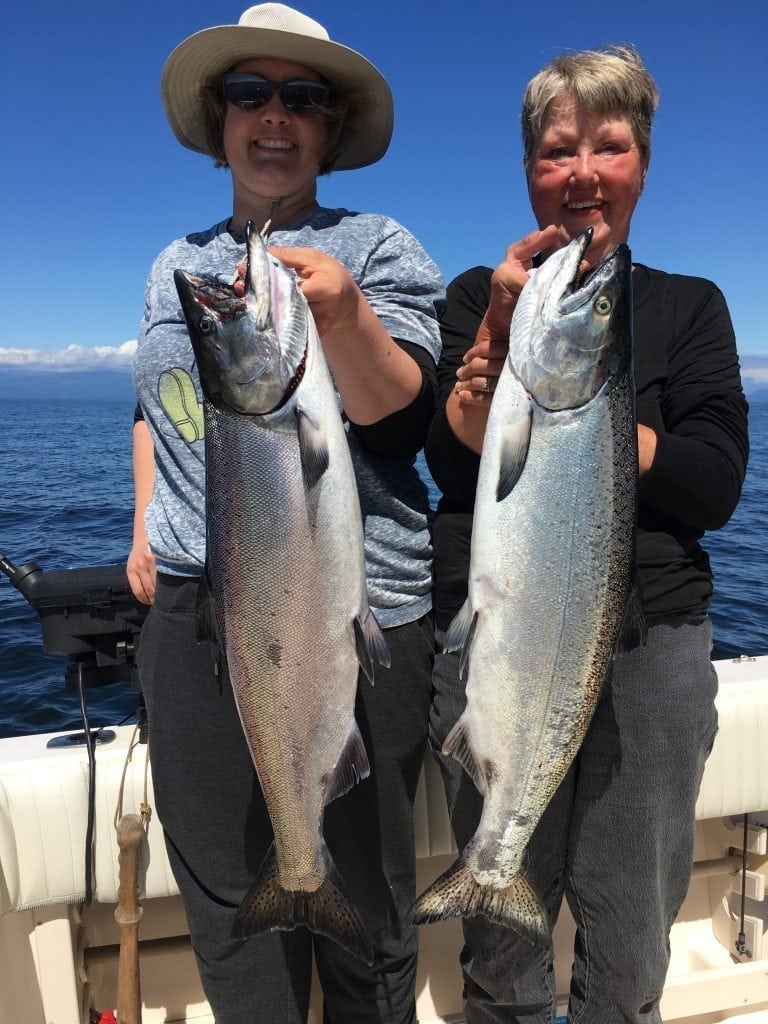OUTLOOK
The long weekend is here! The weather may not look perfect for tanning at the beach but the winds look good for today and Saturday and though we have overcast skies with a little bit of rain in the forecast this is actually a good thing for most fisheries.
On the saltwater front we are seeing consistent fishing across the board and a few big fish coming in up Howe Sound and around Bowen. We are also seeing more coho in the strait. Check out Jason report below. We have also released another “Learn How with Pacific Angler” Video showing you guys and girls how we rig flashers on our guide boats. This is one of the most critical things you can do to increase flasher movement and make sure you are not jamming up swivels or twisting the heck out of your line. At the end of the video you will also get a sneak peak at Jordan’s flasher bag. If you are just hooking up your flasher with a clip or knot you will not want to miss this video.
We will also see a number of fisheries open on the 1st of July. It is the kick off of classic river fly fishing on the Skagit and with this in mind we have Matt’s basic overview of how we fish this system with some fun videos to cover what you need to know if you are planning a trip. Check it out below.
Interior lakes are still fishing “Ok”. The heat is slowing things down a bit. Sean was out and had to work for fish but we are still hearing some really good reports when anglers are in the right spot at the right time, they just seam to be a little less common. This is normal for this time of year and Andre has more info in his lake fishing report.
We will also be looking at the Capilano River and beach fisheries. We are getting some reports from the river and we have been scouting the beach. See Andre and Dustin’s reports below for more details
We are open this weekend so come on by the shop, say hi, and pickup a few things for your long weekend fishing excursions.
Canada Day Long Weekend Hours
Friday June 29 – 10AM – 7PM
Saturday June 30 – 10AM – 6PM
Sunday July 1 – 11AM – 5PM
Monday July 2 – Closed
CLASSES AND COURSES
July is almost upon us so be sure to grab your spot in one of our upcoming July courses before we take a break in August. These two courses always sell out so don’t delay!
Fly Fishing On Beaches
This single evening 3hr seminar will cover the basic principles needed to be an effective beach fly fishermen in BC from Howe Sound to the east coast of Vancouver Island. Topics covered will include rods, reels, fly lines, flies, tides, and techniques. Andre Stepanian, the instructor for this course, has been chasing salmon on our local beaches for over two decades. Remember, east coast Vancouver Island has a pink salmon run every year and last year the Capilano had 12,000 coho! Book this course early as we sold out all courses last year!
Cost: $45.00
Dates: July 10 or July 16
Time: 6:30pm – 9:30pm
Introduction To Fly Fishing
This course was specifically designed to give the new fly fisher the basic knowledge, casting skills and fly fishing strategies to effectively fish our local BC waters. This course is comprised of two sessions; 3hr evening seminar and a 3hr casting session. The dates below show the seminar date first and casting date second.
Dates: July 18 & July 22, 2018
Cost: $125.00 + GST
Seminar Time: 6:30pm – 9:30pm
Casting Time(s): 10am – 1pm or 2pm -5pm
INDUSTRY EVENTS
Vancouver Chinook Classic 2018
Save the date – it’s Game On for the 7th annual Vancouver Chinook Classic, the premier, nonprofit catch and release salmon derby fundraiser for the Pacific Salmon Foundation & Sport Fishing Institute. We look forward to seeing everyone out on the water again this August – fishing and having fun in the sun competing for the large cash prizes!
Date: Sat Aug 18th & Sun Aug 19th 2018
Venue: Pacific Gateway Hotel & Deckside Marina (previously known as Pier 73 Marina)3500 Cessna Drive Richmond
Prizes: 1st place $15,000 2nd place $7,000 3rd place $3,000
Entry Fee: $300 + GST per person
Registration: To make registration easier we have created an online registration process. Register online here: https://www.decksidemarina.com/registration-form
Registration Includes:
- Entry into 2018 Vancouver Chinook Classic
- Complimentary moorage
- Breakfast Saturday & Sunday morning
- Dinner Saturday night
- BBQ and awards ceremony Sunday afternoon
- Drink tickets
- Discounted room rates at the Pacific Gateway Hotel
If you have any questions please give us Deckside Marina a call at 604-970-4882 or email info@decksidemarina.com
For more details have a look at tournament website www.vancouverchinookclassic.com
Thanks to all who participate, donate and support! We welcome all anglers from novice to expert and look forward to seeing everyone again soon – let the fun times begin!
Your VCC Derby organizers,
Pacific Angler
West Coast Fishing Club
Pacific Gateway Hotel
FRIDAY FEATURE
Fair Flies
This week’s feature is the new composite brushes from Fair Flies. Fair Flies’ unique concept is that they train and employ disadvantaged and exploited people in countries where poverty and exploitation of women and children is often times prevalent.
By paying them fair wages and properly training them, the makers of the brushes are not simply making a product, but doing so with a newfound purpose.
These brushes are designed for a one-step process. You can tie them in, do one or two wraps, and then cut it off. Finish with a wing or marabou of your choice, and then call it a day.
Made with ice-dub, predator wrap, flashabou magnum, rubber legs, and more, these brushes are great for big saltwater patterns as well as building shoulders on steelhead flies.
If you want to take a look at them up close, come on in to the shop and take a look at all the different colours we now offer!
Jordan Simpson
FRESHWATER FISHING
Capilano River Fishing Report
The Capilano River is very low and clear which means that there will be a lot less fish coming up the river. Although it is forecasted to rain over the weekend it probably won’t be enough to have any effect on the water level. That said we have been wrong before so keep an eye on the Capilano Kayak Cam. If they open the dam – it’s time to go fishing!
With the low water most of the fish this week were caught first light and it is quite important to fish at first light to ensure the fish are not spooked and no one has gone through the pool yet.
The best method this time of the year is to swing/strip flies with full sinking line. Though the water is very low the pools are very deep and it will be way easier to get the line down with the full sink line. Popular flies are Mickey Fin, Wooly Bugger, various leech patterns and the Cap Bugger.
If you are using a spinning rod or float rod, swinging and retrieving spoons and spinners can be quite effective as well to go through a pool and find some active fish and running a split shot with the same flies the fly fisherman are using can also be a game changer.
Please release all steelhead and wild coho with care.
Stay safe out there,
Dustin Oh
Overview of How to Fish the Skagit River
The Skagit is one of the best local trout rivers for fly fishing. It is a classic bug rich environment and though there is a very healthy population of rainbow trout, cutthroat and bull trout it takes skill and an understanding of aquatic bug life to match the hatch and have success. This is why I enjoy this fishery. I have been fishing the Skagit since I was 13 and to this day I learn something new on almost every trip.
Check out this Video for a look at the kind of fishing we do on the Skagit.
For rods, I fish 4wts and 3wts but 5wts and even 6wt rods will work. In a perfect world you would fish an 8-9ft 3wt for dry fly fishing, a 9.5ft 4wt for nymphing and a 6wt for swinging patterns. I usually pack all 3 but if you have to have one, a 4wt is ideal.
On a simple level you need to understand the 3 basic presentations of fly fishing; nymphing, swung fly and dry fly fishing.
It is very common that I will use all three techniques in a given day on the Skagit. There is a healthy population of mayflies, stone flies and caddis. We use the dry fly and nymphing presentation to imitate these species.
Nymphing
On the nymphing front, equip yourself with a floating line, and a 9ft 5lb leader. Standard taper monofilament leaders will work but at least for nymphing, fluorocarbon sinks faster and is less visible making a 9-10ft fluorocarbon leader idea. I build custom fluorocarbon leaders for this fishery and if you are interested check out this video on Custom Nymphing Leaders
If you are using a simple nymphing rig on the 9-10ft leader you will want to attach fluorocarbon tippet. There are a number of advanced ways to do this but the simple method is to attach 18 inches of 4-5lb fluorocarbon. Behind the tippet knot you will attach a small spilt shot and then the fly. Lastly we recommend you anchor a strike indicator in the first 2-3 ft. of the leader.
My Nymphing Checklist:
- Leaders
- 5lb tippet
- Split shot
- Indicators
Though I carry hundreds of flies with me on the Skagit my favorites are the Prince Nymph, the Hare’s ear and a Golden Stone on size 10-14.
Dry Fly
On the dry fly front we will need to use monofilament because fluorocarbon will make the dry fly sink. Again a 9ft 5lb taper leader is best. I will still add 18 inches to 2 feet of 3-4 lb. tippet before tying on a fly. Dry fly floatant is a must and my go to flies are orange stimulations, parachute mayfly patterns in grey, brown and green and then yellow caddis patterns. There is a wide variety to sizes. Some of my favorite mayflies are as large as a size 8 and I have seen caddis and mayflies as small as a 22. Size 12 is a safe bet but building a box with variety is key.
Swung fly
Lastly there is a large population of bull trout on the Skagit and swinging medium to large olive, white, black or even purple streamer patterns can be very successful. You can do this with a floating line and a very heavy fly but sink tips are much more effective. You can simply loop a sinking 10-12 ft. versi leader in the 4-7ips rating onto your floating line. If I am only carrying one rod, this is a good trick but they do not cast as well as a dedicated sink tip line or single hand Spey style sink tip line. Commando heads are very good for this purpose. Off the sink tip I use 4ft of 8lb maxima or equivalent stiff mono tippet material.
Again here is a video on how we set up the leaders on our sink tips.
If you are heading out this weekend or plan to hit the Skagit over the next few months come in and we will help you round out your fly box and show you how to set up your leaders. If you have hit the Skagit before and know the basics come down and talk to Matt about how he makes his custom leaders and setups.
The Skagit is 100% catch and release and you will need to make sure all your barbs are pinched.
Good Luck!
Matt Sharp
STILLWATER FISHING REPORTS
Interior Lakes Fishing Report
As we said in the outlook we are still getting good reports but we are also hearing some mixed reports were anglers have had to work hard for fish.
I had great reports from customers that fished Corbett Lake. The fish were caught on mayflies both on nymphs and dries. Another solid report was from Hatheume Lake with chironomids hatch because of it’s high elevation so if you are not ready to fish caddis yet on lower elevation lakes then head to Hatheume and other lakes in the same elevation.
Sean was at Tunqua and though they caught fish they had to work for them. We expect things to continue to slow down as water temps rise.
If you are heading out you will want to focus on higher elevation lakes and make sure to fish hard in the mornings and evenings when things are cooler. Chronimids work all year but you will see other hatches this time of year and will want to make sure you have a well rounded fly box. Travelling sedge reports have also been coming in. Fishing with large dry flies to imitate the travelling sedge in the evening can be tons of fun.
Keep sending in your reports!
Andre Stepanian
SALTWATER FISHING REPORTS
Vancouver Saltwater Salmon Fishing Report
Looks like we are going to have a bit of mixed bag this weekend with the weather and the winds with a SE and some rain, then switching to a NW and some sun later in the weekend and into next week. Depending on what day you go out you may see it flat calm or you might get NW 20 plus, so lets cover some options for the Gulf Islands as well as a short run keeping it close to home.
If you are heading over to the Gulf Islands and fishing spots like Porlier or Thrasher, the fish are generally on the structure this time of year, down deep, looking for bait balls of herring hiding on the bottom. This means you should be keeping your gear close to the bottom and you are often in 100-200 feet of water. We generally fish 1 rod per rigger in these situations as we are constantly lowering the rigger and bringing it up depending on the bottom contour. Glow flashers are key, like the Salty Dawg, Phantom Series, and Footloose Series. Chartreuse, green, blue, and purple are all good choices for blade colours in the series just mentioned. Hootchies with a 32-40 inch leader are producing and the splatter back hootchies in blue, chartreuse, and green have been working well.
If you don’t feel like fishing the structure you could try fishing off Thrasher Rock marker in 300-600 feet and 120-200 on the riggers with the above gear and you might pick up a few chinook. If that isn’t working head out into the deep water and bring your gear up shallow as there has been a lot of coho “offshore” in about 1000 feet of water. By shallow I am talking from the surface down to about 60 on the riggers. Try a hootchy with a shorter leader around 25-28 inches. For colours the coho seem to like white and UV white shades and they also like a bit of pink or red in the hootchy sometimes. Some good colours are the Yamashita OA12R, OAL12R, O11R, OMX1R, and OAX15R. We fish these on our guide boats and have them in stock at the store as well. For flashers use a Betsy, Twisted Sista, Green Onion, Purple Onion, and UV Jelly Fish Yellow Green Mist Kinetic. No need for glow on the flasher at these shallow depths.
So that should have you covered if you are heading across. If not, don’t worry there is all sorts of fishing going on over on this side of the Salish Sea. Lets start with the coho again. You can take the same hootchies and flashers as listed above and fish them along West Van from Point Atkinson all the way down to the Cap Mouth. There are already over 1000 coho in the hatchery. Keep your gear shallow, in the top 50 feet or less of the water column for the most part. If the winds allow, do some exploring out on the Hump or even offshore of the Hump where it drops off into 1000 feet into the Strait of Georgia. There have been good catches of coho out there. We stopped off at some current seams and a debris line out in that area on the way back from Thrasher on Monday and hit a lot of coho up to around 6 pounds. We got some reeling in our gear and the deepest we hit fish was 65 on the rigger. By a lot I mean we had some doubles and even a triple. Cover a lot of water until you find a good school and then mark it on your chart plotter and double back once you quit getting bites. Remember you can only retain hatchery coho.
If you are looking for chinook you have options as well. South Bowen from Cowan to Roger Curtis has produced chinook everyday this week. It is not red hot like it was in April and May, but it is consistently producing. You will need to make the most of your opportunities because you will be working hard for your bites, but put the time in and you will be rewarded. Bait and spoons have been working well and good rigger depths have been 90-150. Below is a picture of spoons and teaser heads you should fish up shallow, followed by spoons and teaser heads for your deeper lines. The top row is your UV and nickel finishes and the bottom row is your glow finishes. The pictures never do the UV/nickel finishes justice, but when you put them in the water and they start moving around and the light hits them, you will see their fish catching properties.
If you are looking for protected waters you could try Hole in the Wall. It always has some feeder chinook around this time of year and now the odd mature fish headed for the Squamish or Cheakamus is starting to show up. These larger fish are usually around the first 2 weeks of July. The “Hole” is a finicky spot, good one day and slow the next, so don’t wait for a report. If you have the time or want to fish this spot, just go for it! Your next bite could be an undersized feeder or it could be a “size XL” mature chinook. Bait and spoons are also good choices, see picture above. 50-100 is good in the morning and then as the sun hits the water go deeper, 80-140.
Crabbing is slowing down. The commercial fleet has been open for a few weeks now and we can see there are fewer keepers around each trip.
See you in the shop or on the water,
Jason Tonelli
Beach Fly Fishing Report
About two weeks ago I started scouting the beach for early coho. I am getting excited for the start of the season but unfortunately the winds have been brutal on the days that I have been out. On Thursday I went to the beach for early morning low tide and the coho were swirling 20ft in front of me. My heart was pounding with excitement to finally see some fish but since the low tide was in the afternoon combined with a bright sunny day, it was definitely much harder to hook up.
We have had solid reports of coho in the strait so hopefully more fish will show up at Ambleside soon.
Fishing low tides is always key. The low tide on Saturday the 30th of June is at 2:00 so make sure you can start fishing at 11:30 to 4:30 until the cycle ends on Tuesday. Come by the store and we will set you up with the right gear to increase your chances in catching these finicky fish. There are also 2 more dates available in my Beach Fly Fishing course so call the store and sign up if you are interested.
Andre Stepanian


